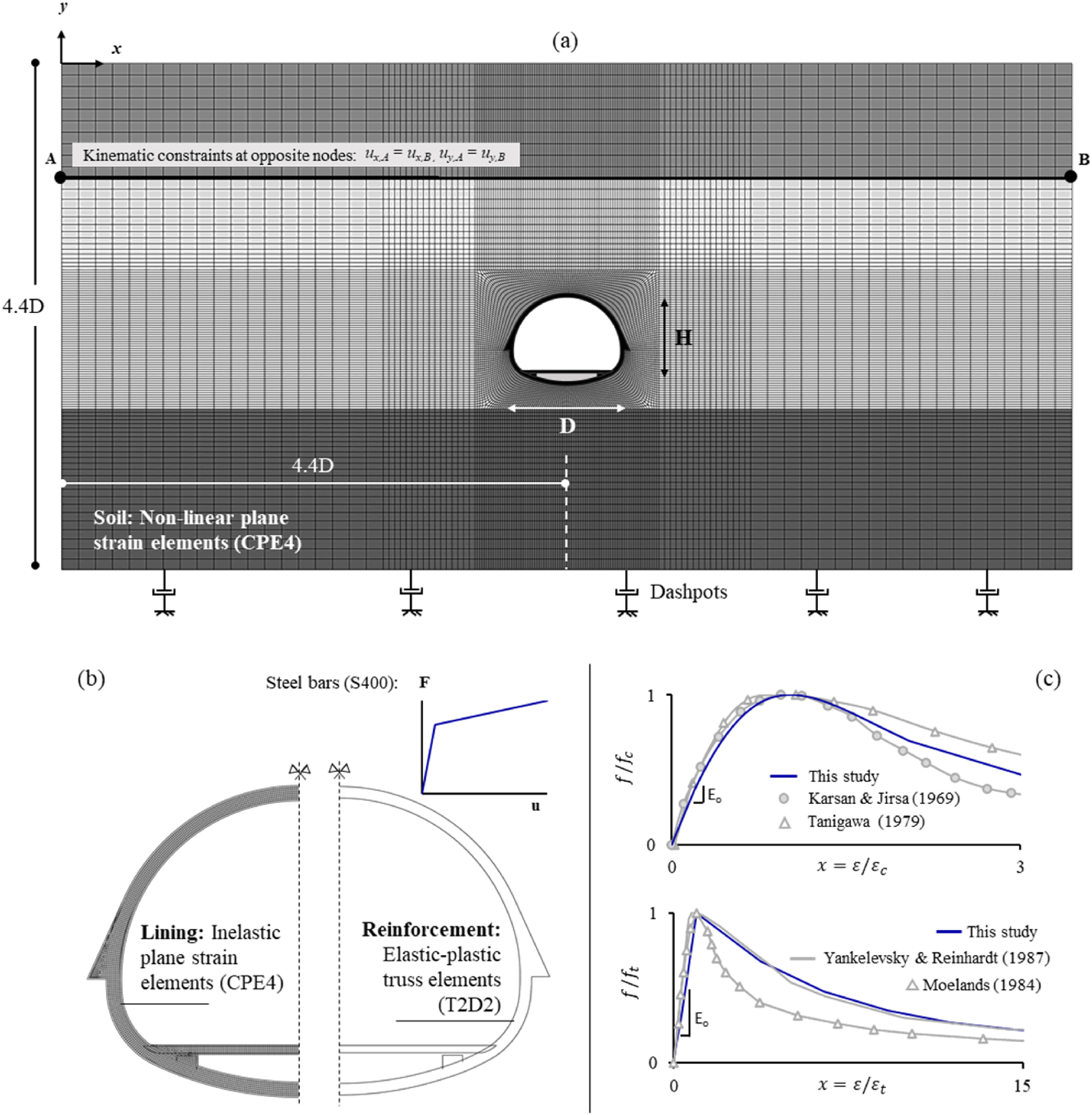JRMGE / Vol 15 / Issue 3
A numerical case study on the long-term seismic assessment of reinforced concrete tunnels in corrosive environments
Maria Antoniou, Antonios Mantakas, Nikolaos Nikitas, Raul Fuentes
Show More
a ETH Zurich, Zurich, Switzerland
b National Technical University of Athens, Athens, Greece
c University of Leeds, Leeds, UK
d RWTH Aachen University, Aachen, Germany
2023, 15(3): 551-572. doi:10.1016/j.jrmge.2022.10.003
Received: 2022-01-28 / Revised: 2022-08-24 / Accepted: 2022-10-16 / Available online: 2022-11-12
2023, 15(3): 551-572.
doi:10.1016/j.jrmge.2022.10.003
Received: 2022-01-28
Revised: 2022-08-24
Accepted: 2022-10-16
Available online: 2022-11-12
The paper investigates the long-term seismic behaviour of an underground reinforced concrete (RC) metro tunnel in Santiago, Chile, considering the combined effects of chloride-induced corrosion and cumulative, low-amplitude seismic shaking on the structure's performance. The soil-tunnel response is evaluated with the aid of transient, nonlinear finite element analysis using a two-dimensional (2D) plane strain numerical model that adopts advanced nonlinear models for the simulation of soil and concrete plasticity and the dynamic stiffness behaviour. The effects of corrosion deterioration are demonstrated in terms of time-dependent loss of rebar area and cover concrete stiffness and strength. The study illustrates the influence of ageing and repeated seismic shaking on lining deformation, crack development, and the modal characteristics of the intact and degrading systems. The results indicate that multiple low-amplitude events drive the non-degrading RC tunnel beyond its elastic regime without significant structural response consequences. A noticeable impact of corrosion deterioration on the structure's seismic performance is revealed, increasing with the number and intensity of earthquake events. Two different tunnel embedment depths are comparatively assessed. The analyses demonstrate larger co-seismic section convergence in the case of the deeper tunnel, yet a less pronounced effect of ageing and successive seismic loading compared to the shallow section, which is evident in the RC lining cracks at the end of shaking.
Keywords: Tunnels, Reinforcement corrosion, Ageing, Earthquakes, Numerical modelling, Long-term performance, Concrete cracking behaviour
Show Figure(s)
Supplementary Material
Share and Cite
Maria Antoniou, Antonios Mantakas, Nikolaos Nikitas, Raul Fuentes, 2023. A numerical case study on the long-term seismic assessment of reinforced concrete tunnels in corrosive environments. J. Rock Mech. Geotech. Eng. 15 (3), 551-572.
Article Data
Author(s) Information
Maria Antoniou
✉️ maria.antoniou@igt.baug.ethz.ch

Maria Antoniou graduated from the School of Civil Engineering of the National Technical University of Athens (Greece) in 2013, where she defended her thesis in the field of Soil-Structure Interaction and Earthquake Engineering. She received her MSc degree from the University of Dundee (UK) in 2014 in the field of Geotechnical and Offshore Engineering. She is currently a PhD candidate at ETH Zurich (Switzerland) and her main research interests include: (1) numerical and experimental investigations of the life-cycle performance of foundations in the offshore environment, (2) numerical modelling of the response of novel seismic isolation systems, and (3) seismic risk assessment and resilience-based design of various types of infrastructure. She has participated as a consultant/researcher in several technical and research projects with an emphasis in soil dynamics and earthquake engineering. She is a published author in peer-reviewed journals and conference proceedings. She was actively involved in the organization of the 1st and 2nd International Conferences on Natural Hazards and Infrastructure held in Chania, Greece in 2016 and 2019, respectively.

